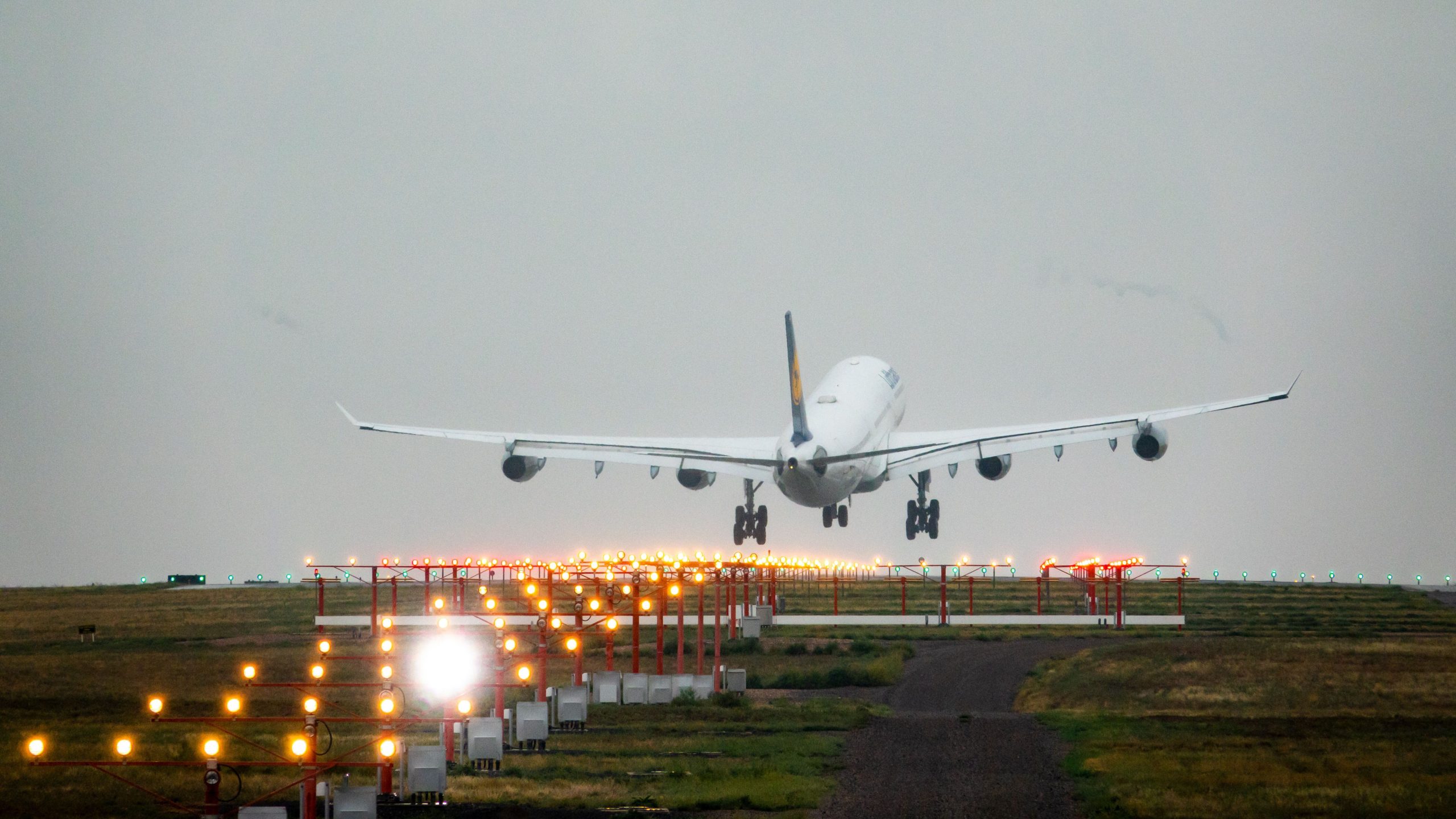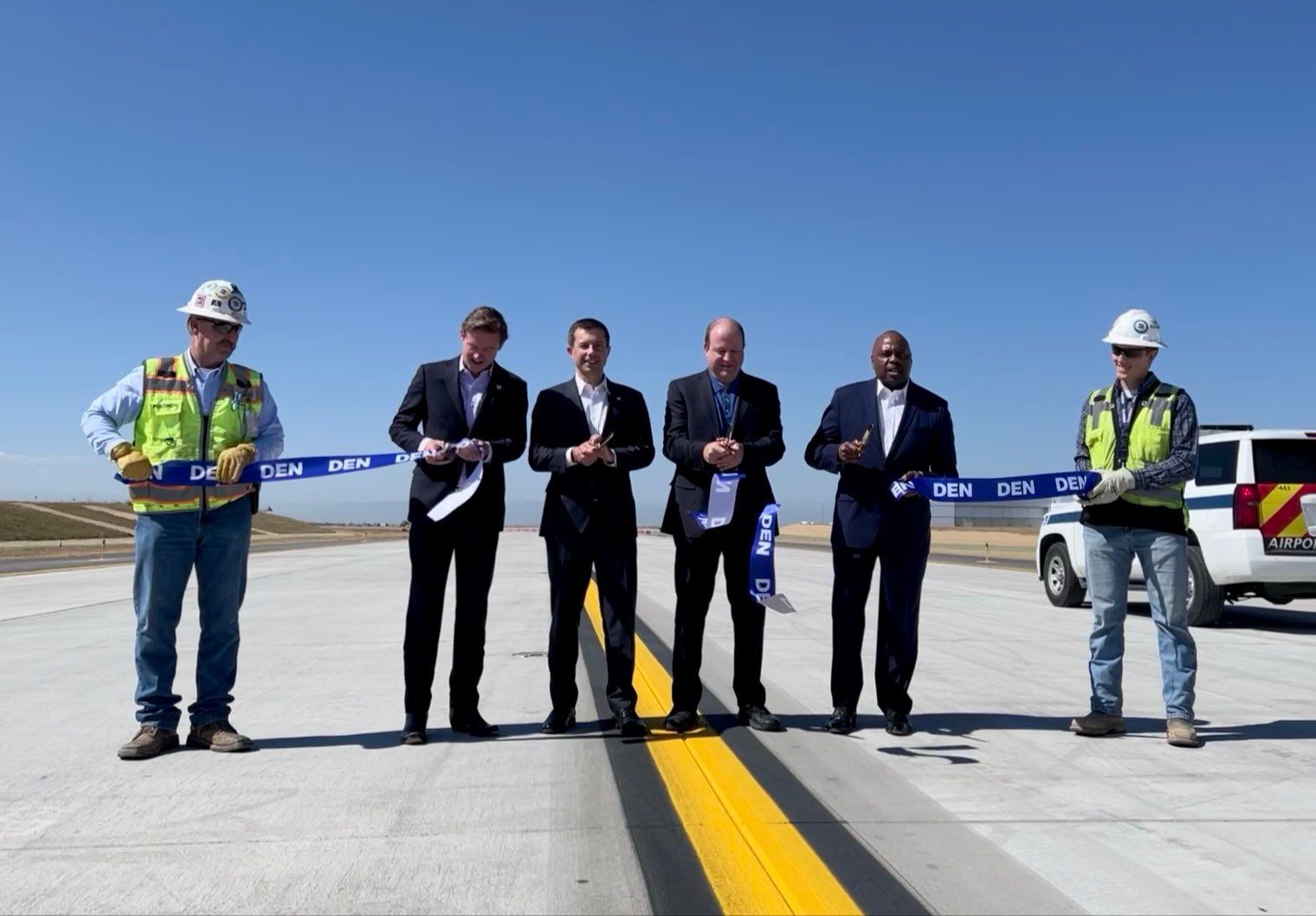Summary
- Denver International Airport (DEN) has opened a new FAA-funded $50 million taxiway to enhance safety and efficiency.
- Taxiway EE eliminates a hot spot at the intersection of two other taxiways, allowing unrestricted access to and from Runway 17L-35R.
- The airport has also received a $30.6 million grant for runway rehabilitation and lighting system upgrades due to be completed next month.
Denver International Airport (DEN) has cut the ribbon on its new $50 million taxiway, the largest FAA-funded safety project in the country. The new taxiway will improve safety and efficiency at the airport by eliminating a ‘hot spot’ – let’s take a closer look below.
Denver opens new taxiway
The airport held a ribbon-cutting ceremony on Tuesday to open Taxiway EE, with US Secretary of Transportation Pete Buttigieg, Colorado Governor Jared Polis, and Denver Mayor Mike Johnston among those in attendance.
Photo: Denver International Airport
Secretary Buttigieg commented,
“There’s a lot of technology in the flight deck and in the control tower designed to keep things safe, but sometimes the best technology is concrete—literally. When planes have to cross in front of an active runway to get where they need to go, it creates added risk. That’s why we were proud to provide $50 million to help fund the construction of a new, safer taxiway.”
Taxiway EE was fully funded by the FAA and is the agency’s largest safety project to date – the taxiway was completed within budget and with minimal disruption to airport operations, led by Colorado-based contractor Flatiron. The project created over 400 local jobs, while over 80% of companies involved came from Colorado, 40% of which are categorized as ‘Disadvantaged Small Businesses.’
Fixing a hot spot
The new taxiway will enable unrestricted access to and from Runway 17L-35R by removing a hot spot at the intersection of Taxiway M and Taxiway ED. A hot spot is defined as an area of an airport at increased risk of accidents, such as runway incursions or collisions.
With Taxiway EE, aircraft no longer need to cross an active runway (Runway 17R) to take off from Runway 17L, significantly improving efficiency and runway capacity.
Photo: Denver International Airport
Given that Denver enjoyed its busiest-ever month in June and will handle up to 80 million passengers for the year, capacity improvements will be most welcome. The airport currently operates with six active runways and has conducted studies on a potential seventh runway, although this wouldn’t be ready for several years if it does happen.
Governor of Colorado, Jared Polis, noted,
“This new runway and the new lights will make this a safer and more efficient airport for all passengers and airlines. This improvement shows the ongoing success of our efforts make this airport an even larger economic hub, and this project is a significant step forward for DIA.”
DEN says that this “added option decreases the risk and increases the efficiency and capacity of the entire system by 10%.” The FAA is eager to improve safety standards across the country following several high-profile close calls in recent months.
Lighting and runway grant
The airport has also received a $30.6 million grant from the Bipartisan Infrastructure Law for its Runway 17L-35R rehabilitation project. Along with much-needed repair work on the runway, the airport will upgrade its lighting systems to LED, among other important renovations.
Photo: Denver International Airport
This project is estimated at over $41.7 million – most of which will be covered by the grant – and will be finished in mid-October. The Biden Administration’s Bipartisan Infrastructure Law has issued over $200 million to airports nationwide for lighting system improvements alone. Overall, the bill will provide approximately $15 billion in funding for airport infrastructure, helping the country’s airports move into the modern era.
What are your views on Denver International Airport’s new taxiway? Let us know your insights in the comments.





